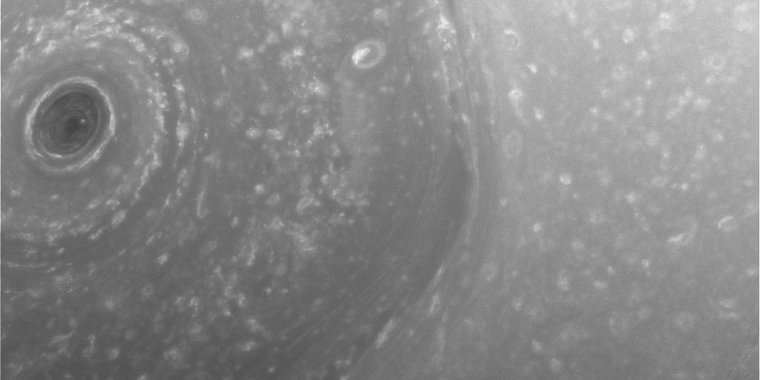| News / Space News |
Over Saturn's Turbulent North
NASA's Cassini spacecraft has sent to Earth its first views of Saturn's atmosphere since beginning the latest phase of its mission. The new images show scenes from high above Saturn's northern hemisphere, including the planet's intriguing hexagon-shaped jet stream.

This view from NASA's Cassini spacecraft was obtained about half a day before its first close pass by the outer edges of Saturn's main rings during its penultimate mission phase. ![]()
Cassini began its new mission phase, called its Ring-Grazing Orbits, on Nov. 30. Each of these weeklong orbits -- 20 in all -- carries the spacecraft high above Saturn's northern hemisphere before sending it skimming past the outer edges of the planet's main rings.
Cassini's imaging cameras acquired these latest views on Dec. 2 and 3, about two days before the first ring-grazing approach to the planet. Future passes will include images from near closest approach, including some of the closest-ever views of the outer rings and small moons that orbit there.
The next pass by the rings' outer edges is planned for Dec. 11. The ring-grazing orbits will continue until April 22, when the last close flyby of Saturn's moon Titan will once again reshape Cassini's flight path.
With that encounter, Cassini will begin its Grand Finale, leaping over the rings and making the first of 22 plunges through the 1,500-mile-wide (2,400-kilometer) gap between Saturn and its innermost ring on April 26.
On Sept. 15, the mission's planned conclusion will be a final dive into Saturn's atmosphere. During its plunge, Cassini will transmit data about the atmosphere's composition until its signal is lost. (NASA)
YOU MAY ALSO LIKE




